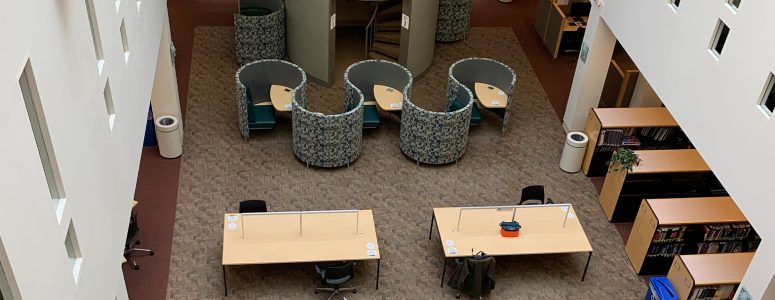
Recent years have included so much unexpected change. During the midst of the shutdowns and ever since, it has been truly incredible to see the innovation from libraries and other public spaces to continue supporting their respective communities.
These experiences accelerated a lot of changes, particularly for furniture and design in public spaces, that are here to stay.
In a webinar with Library Journal, I had the opportunity to speak about the value of flexibility right now, and the four shifts in furniture that libraries need to make in order to maintain that flexibility. I wanted to share those shifts today.
Let me give you a little bit of background before we jump in.
There has been a lasting trend in the market to move toward more flexible environments. In many ways, it’s almost become a buzzword. But the idea of flexibility was flipped on its head in response to COVID-19. Prior to the pandemic, flexible furniture options and configurations meant that we’d adjust the layout in a major way every two or three years. Now, as requirements, restrictions, and community needs have changed so rapidly, we’ve needed to be prepared to make significant changes every two or three weeks.
That’s a big shift.
In order to keep up with it, and be effective in how we support our community, we’ve been seeing over and over again how crucial it is for us to structure in ways that allow us to adjust on the fly.
Honestly, we don’t know what’s ahead. Even though it feels like there is some sort of a return to normalcy that is tangible, what’s more likely is that the idea of “normal” will be ever-changing.
In response, here are four shifts to consider with library furniture for the future of our spaces:
#1: Benching to Tables

We used to think of benching systems as a fairly flexible product. It’s a long-run table that can be set down, with technology easily added into it, such as dedicated computers or drop-down areas for work spaces. You can divide space up between individuals. It can be broken down and moved within a day somewhat easily. So we’d consider that a flexible product for rearranging the space, say, every few years.
Well, now that we’re looking at having to rearrange a space every week, every month, or every day, we probably need to go in and segment our furniture solutions further into individual table options that can be daisy-chained together with electrical, be reconfigured easily, and put away or brought out last-minute, all to help us manage the capacity in a space.
#2: Carrels to Work Stations

Carrels wouldn’t necessarily be considered a “flexible” solution by most people, but they certainly have been a staple in libraries for decades and decades. And for good reason. They provide great, consistent work areas for people.
However, as we move into the future, it’s crucial for us to consider how our study areas will need to be individualized as work stations so they can be disconnected, moved around, maybe moved off to the side, and rearranged to be more advantageous to the adapting space or restrictions in our facility.
#3: Demountable to Movable

Demountable walls have been a really popular solution for 10+ years. They’re a great, cost-effective solution to erect full-glass or partial-glass study and meeting rooms. But as we go into the future, these rooms will likely require more flexibility than they offer and the hassle of moving them around or segmenting them off with temporary solutions will outweigh the initial value they provided.
Instead, leveraging movable solutions (such as FrameWork) will allow us to segment space for a variety of functions with the flexibility to adjust those spaces in minutes on a weekly or daily basis. Not only will this allow us to adapt as any public health guidelines adjust, but this shift will also help us better support community needs as they arise.
#4: Large Fixed to Smaller Movable

There’s already been a big trend for large circulation desks to move out of the space and be replaced with smaller desks, often on casters, that can be pushed apart or moved to adjust the space. This trend should only increase from here. The potential uses and configurations are exponentially increased when we make the shift from large fixed pieces to smaller movable pieces.
This is where I want to make a quick note about wheels: A solution being “flexible” doesn’t mean it always has casters. Something being “movable” doesn’t mean it always has casters either. But it does mean it’s both physically and visually lighter, easier to flex with changing guidelines, and offers the freedom we all need right now from the furniture available in our space.
How we intentionally are able to segment our space, utilize flexible solutions, and make people feel safe and comfortable will determine our effectiveness moving into the future.
How are you structuring your space for long-term effectiveness?
